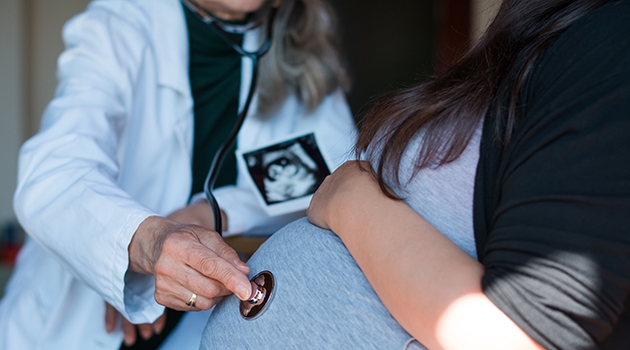Midwives want continuity for pregnant people
Over half of midwives are positive towards following the same person throughout their pregnancy, labour, and the early stages following childbirth. These findings come from a new study by Uppsala University and are based on questionnaire responses from over 2,000 midwives. The study shows that there is enough interest to be able to meet the wishes of pregnant people wanting care from a midwife they know.
“Healthcare models using midwife continuity are already being used around Sweden. Before this can be introduced and used on a larger scale nationwide, it is important to determine whether midwives are interested in working with continuity models and find out about their attitudes. Our study suggests that over half of the midwives to have responded are interested in a continuity model and are prepared to work with it,” says Hanna Fahlbeck, one of the study’s co-authors, licensed midwife, and doctoral student at Uppsala University.
WHO recommendation
The World Health Organisation is just one organisation to strongly recommend “midwife continuity” where the same midwife or a small group of midwives, follows the person throughout their pregnancy, labour, and the early stages following childbirth. This model is relatively uncommon in Sweden, despite around half of those who are pregnant requesting midwife continuity. A handful of regions have introduced the method through projects, these include Uppsala and Sollefteå. The model is now available to pregnant people at the Karolinska University Hospital.
It is known that many of those who are pregnant wish they could be followed by one or a handful of midwives throughout their pregnancy; in this new study, ‘“A perfect fit”’ – Swedish midwives’ interest in continuity models of midwifery care’, researchers have studied the interest among Swedish midwives into working with continuity models, and the determining factors behind their willingness and preparedness to work with these models.
Of the 2,084 midwives to respond to the questionnaire, over half of them – 56.1 per cent – demonstrated an interest in working with continuity models. Midwives aged under 45 as well as those who had less than 10 years of experience showed the greatest interest.
Interest in continuity models
The continuity models had the greatest appeal for midwives who rotated among different units or work duties. Working daytime hours, double shifts or hourly employment were also factors linked to the interest in working with continuity models.
The study is interdisciplinary, and the midwives answered an online questionnaire about their background and workplace-related variables. The analyses used odds ratios and logistic regression.
“To be able to offer evidence-based healthcare, we need to develop strategies to build up continuity models that are suitable for pregnant people and midwives in different parts of Sweden. And I hope this is where our results can help,” says Hanna Fahlbeck.
Elin Bäckström
Publication:
Ingegerd Hildingsson, Hanna Fahlbeck, Birgitta Larsson, Margareta Johansson, ‘A perfect fit’ – Swedish midwives’ interest in continuity models of midwifery care, Women and Birth, 2022, https://doi.org/10.1016/j.wombi.2022.04.014

